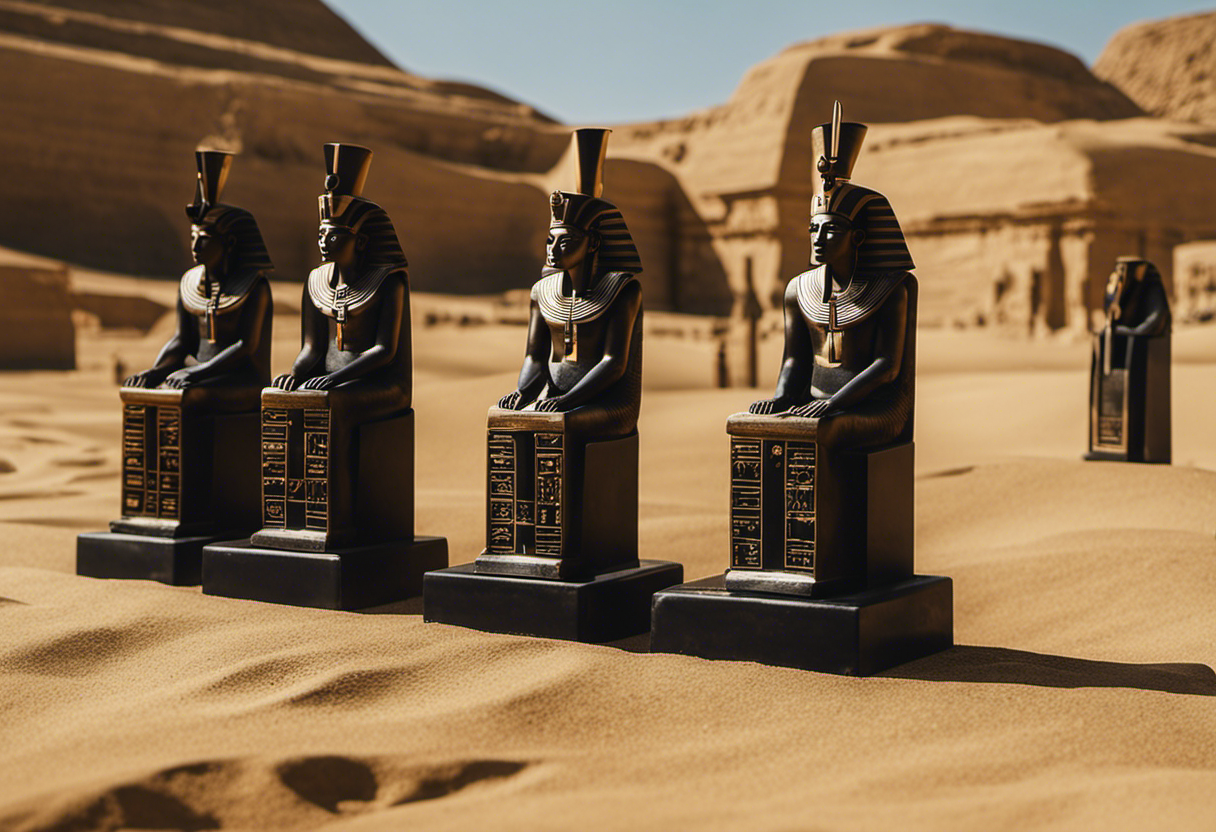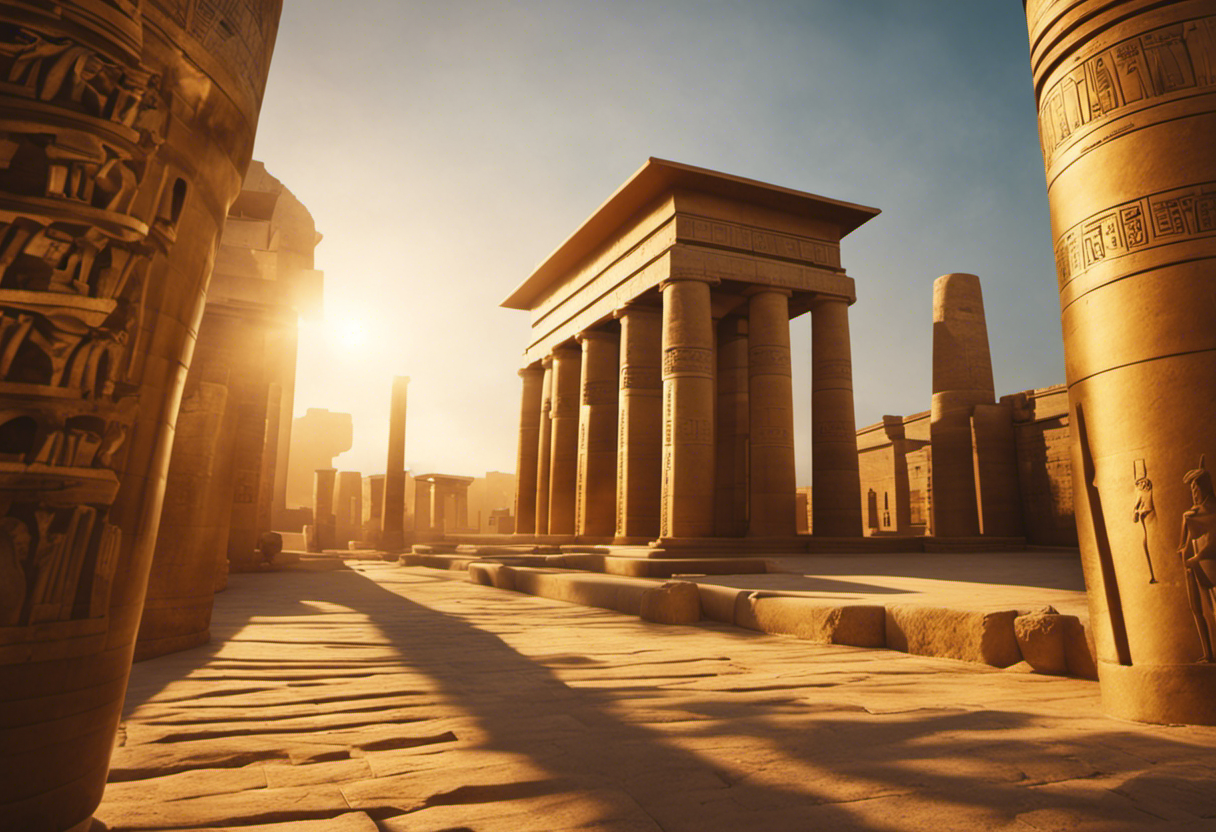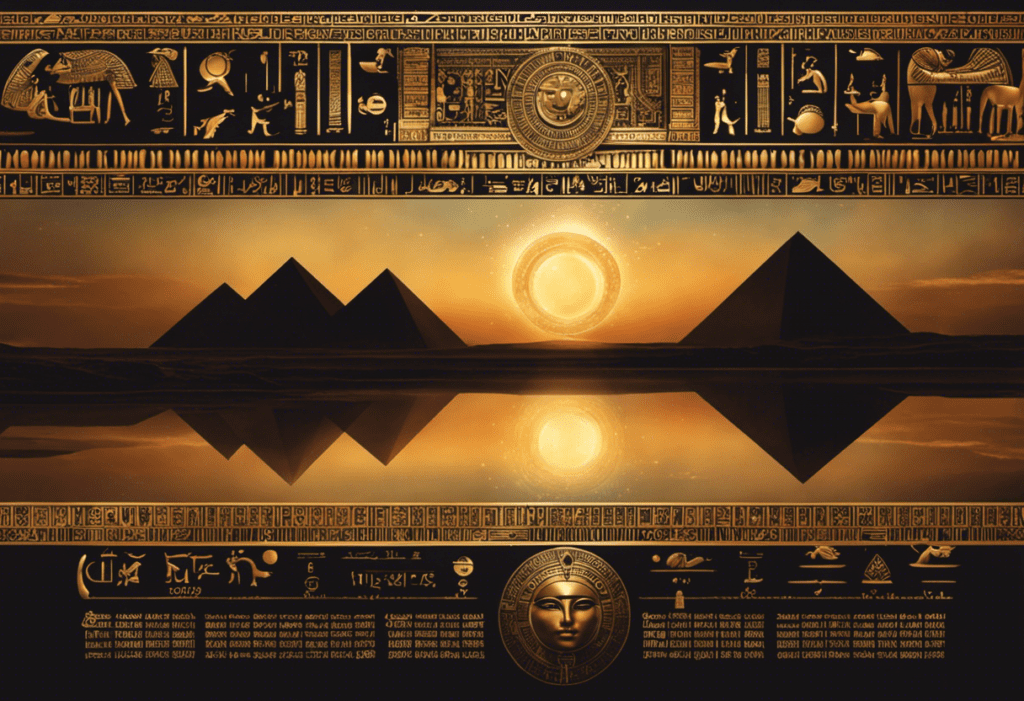In the realm of timekeeping, the sands of history have witnessed the evolution of calendars as they strive to capture the essence of celestial movements. The Egyptian calendar, rooted in lunar observations, stands as a testament to humanity’s relentless pursuit of accuracy and order.
However, as the sun’s prominence in the heavens grew undeniable, a transition from lunar to solar observations became imperative. This article explores the challenges and implications of this pivotal shift, shedding light on the significance of the solar-based Egyptian calendar.
Key Takeaways
- The lunar-based Egyptian calendar was originally developed based on the observation of lunar cycles and the connection to agricultural practices and the Nile River.
- The calendar consisted of 12 months with 30 days each, with an additional 5 days added at the end of the year. However, it fell out of sync with the solar year, resulting in shifts in seasons and festivals.
- The transition from the lunar to solar observations marked a significant advancement in the Egyptian calendar, incorporating solar observations to address the discrepancies and aligning it with agricultural seasons and religious festivals.
- The transition to the solar-based calendar brought several benefits, including more accurate measurement of time, improved alignment with agricultural and religious practices, and enhanced stability and reliability in the timekeeping system.
Origins of the Lunar-Based Egyptian Calendar


The origins of the Lunar-Based Egyptian Calendar can be traced back to the ancient Egyptians’ observation of the lunar cycles and their significance in agricultural practices. The ancient Egyptians were highly dependent on the Nile River for their agricultural activities, and they recognized the connection between the lunar cycles and the flood patterns of the river. They observed that the annual flooding of the Nile coincided with the appearance of the star Sirius in the sky, which occurred around the same time as the new moon. This led them to develop a calendar that was based on the lunar cycles.
The Lunar-Based Egyptian Calendar consisted of 12 months, each with 30 days. In order to account for the extra days in the solar year, the Egyptians added 5 additional days at the end of the year. These days were considered to be outside of the normal calendar and were considered to be of bad luck.
The Lunar-Based Egyptian Calendar was primarily used for agricultural purposes, as it allowed the Egyptians to track the timing of the annual flood and plan their farming activities accordingly. It was also used for religious and administrative purposes, as important festivals and events were scheduled based on the lunar calendar.
Overall, the Lunar-Based Egyptian Calendar played a crucial role in the agricultural and cultural life of ancient Egypt.
The Influence of Solar Observations on the Egyptian Calendar


Solar observations played a significant role in shaping the evolution of the ancient Egyptian timekeeping system. As the Egyptians began to recognize the importance of the sun in their daily lives, they developed a calendar that incorporated both lunar and solar observations. This transition from a purely lunar-based calendar to a solar-based one was a gradual process that spanned several centuries.
The solar observations made by the ancient Egyptians were primarily focused on determining the position of the sun in the sky throughout the year. They observed the sun’s movement along the horizon, the length of daylight hours, and the changing seasons. These observations allowed them to establish a more accurate calendar that was based on the solar year, rather than solely on lunar cycles.
One of the key solar events that the Egyptians observed was the annual flooding of the Nile River. They recognized that this flooding coincided with the heliacal rising of the star Sirius, which heralded the beginning of the new year. By tracking the regularity of this event, the Egyptians were able to develop a calendar that was based on a 365-day year, divided into 12 months of 30 days each, with an additional five or six ‘epagomenal’ days added at the end of the year.
Challenges and Limitations of the Lunar-Based Calendar


Challenges arose in the ancient timekeeping system due to the reliance on lunar cycles, leading to limitations in accurately tracking the passage of time. The lunar-based calendar used by the ancient Egyptians was based on the observation of the moon’s phases, which resulted in a year consisting of 12 lunar months. However, this system presented several difficulties.
Firstly, the lunar months are approximately 29.5 days long, resulting in a year of only 354 days. This meant that the Egyptian calendar gradually fell out of sync with the solar year, causing seasons and religious festivals to shift over time.
Secondly, the lunar-based calendar lacked precision in predicting the exact timing of astronomical events. The variation in the length of lunar months, coupled with the fact that the solar year is approximately 365.25 days long, made it challenging to accurately determine the onset of seasons or the occurrence of eclipses.
To illustrate the challenges faced by the ancient Egyptians, consider the following table:
| Challenge | Limitation | Consequence |
|---|---|---|
| Inconsistent year length | Seasons and religious festivals shifted over time | Disruption of agricultural and religious practices |
| Inaccurate predictions | Difficulty in determining the onset of seasons | Imprecise planning and uncertainty |
| Lack of synchronization | Mismatch between lunar and solar cycles | Inconvenience and confusion |
| Inability to track events | Uncertainty in predicting eclipses and other phenomena | Limited understanding of celestial occurrences |
These challenges prompted the Egyptians to transition from a lunar-based calendar to one that incorporated solar observations, allowing for greater accuracy and stability in timekeeping.
The Transition Period: Lunar to Solar Observations


During this period, ancient civilizations sought to enhance the accuracy and reliability of their timekeeping systems. The transition from lunar to solar observations marked a significant advancement in the development of the Egyptian calendar. The lunar calendar, based on the cycles of the moon, had its limitations in accurately tracking the solar year. This discrepancy led to seasonal drifts and affected the agricultural and religious practices of ancient Egyptians. To address this issue, the Egyptians began incorporating solar observations into their timekeeping system.
The transition period involved the observation of the heliacal rising of the star Sirius, also known as Sothis, which coincided with the flooding of the Nile River. This astronomical event was carefully observed and recorded, allowing the Egyptians to establish a connection between the solar and lunar calendars. By monitoring the annual cycle of Sirius, they were able to synchronize the lunar and solar calendars.
This transition to a solar-based calendar provided a more accurate measurement of time, aligning the calendar with the agricultural seasons and religious festivals. The introduction of intercalary days further improved the accuracy of the calendar, compensating for the remaining fractional days in the solar year. The adoption of a solar calendar marked a significant milestone in ancient Egyptian civilization, enabling them to plan their agricultural activities and religious ceremonies more effectively.
Implications and Significance of the Solar-Based Egyptian Calendar


The implementation of a more accurate timekeeping system in ancient Egypt had far-reaching effects on agricultural planning and religious ceremonies.
The transition from a lunar-based to a solar-based calendar allowed the Egyptians to align their agricultural activities with the seasons more effectively, leading to improved crop yields and overall food security. By tracking the movement of the sun, the Egyptians were able to determine the optimal time for planting and harvesting, ensuring that their agricultural practices were in harmony with the natural rhythms of the environment. This not only increased the productivity of their agricultural activities but also reduced the risk of crop failure and famine.
Furthermore, the solar-based calendar had significant implications for religious ceremonies and rituals in ancient Egypt. The Egyptians believed that the gods and goddesses controlled the seasons and agricultural cycles, and it was essential to appease them through various religious observances. The accurate timekeeping provided by the solar calendar allowed the priests to determine the precise dates for religious festivals and ceremonies, ensuring that they were conducted at the appropriate times. This helped to maintain social cohesion and reinforce the religious beliefs and practices of the Egyptian society.
Conclusion
In conclusion, the transition from a lunar-based to a solar-based Egyptian calendar marked a significant shift in the way time was measured and organized.
This shift was driven by the limitations and challenges of the lunar-based calendar, which relied on the observation of the moon’s phases. The adoption of solar observations allowed for a more accurate and reliable system of timekeeping.
Although the transition may have faced resistance from those accustomed to the lunar-based calendar, the solar-based calendar ultimately proved to be more effective in aligning with the natural cycles of the sun and seasons.




